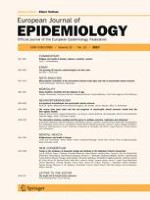Published in:

01-10-2017 | MENTAL HEALTH
Religiousness and health in Europe
Authors:
Linda Juel Ahrenfeldt, Sören Möller, Karen Andersen-Ranberg, Astrid Roll Vitved, Rune Lindahl-Jacobsen, Niels Christian Hvidt
Published in:
European Journal of Epidemiology
|
Issue 10/2017
Login to get access
Abstract
Recent research suggests that epidemiological forces in religion and health can have opposed effects. Using longitudinal data of people aged 50+ included in wave 1 (2004–2005) of the Survey of Health, Ageing and Retirement in Europe (SHARE), and followed up through waves 2 (2006–2007), 4 (2011) and 5 (2013), we examined two forms of religious internalization and their association with health. Multivariate logistic regressions were used to examine all associations. Taking part in a religious organization was associated with lower odds of GALI (global activity limitation index) (OR = 0.86, 95% CI 0.75, 0.98) and depressive symptoms 0.80 (95% CI 0.69, 0.93), whereas being religiously educated lowered odds of poor self-rated health (SRH) 0.81 (95% CI 0.70, 0.93) and long-term health problems 0.84 (95% CI 0.74, 0.95). The more religious had lower odds of limitations with activities of daily living 0.76 (95% CI 0.58, 0.99) and depressive symptoms 0.77 (95% CI 0.64, 0.92) than other respondents, and compared to people who only prayed and did not have organizational involvement, they had lower odds of poor SRH 0.71 (95% CI 0.52, 0.97) and depressive symptoms 0.66 (95% CI 0.50, 0.87). Conversely, people who only prayed had higher odds of depressive symptoms than non-religious people 1.46 (95% CI 1.15, 1.86). Our findings suggest two types of religiousness: 1. Restful religiousness (praying, taking part in a religious organization and being religiously educated), which is associated with good health, and 2. Crisis religiousness (praying without other religious activities), which is associated with poor health.